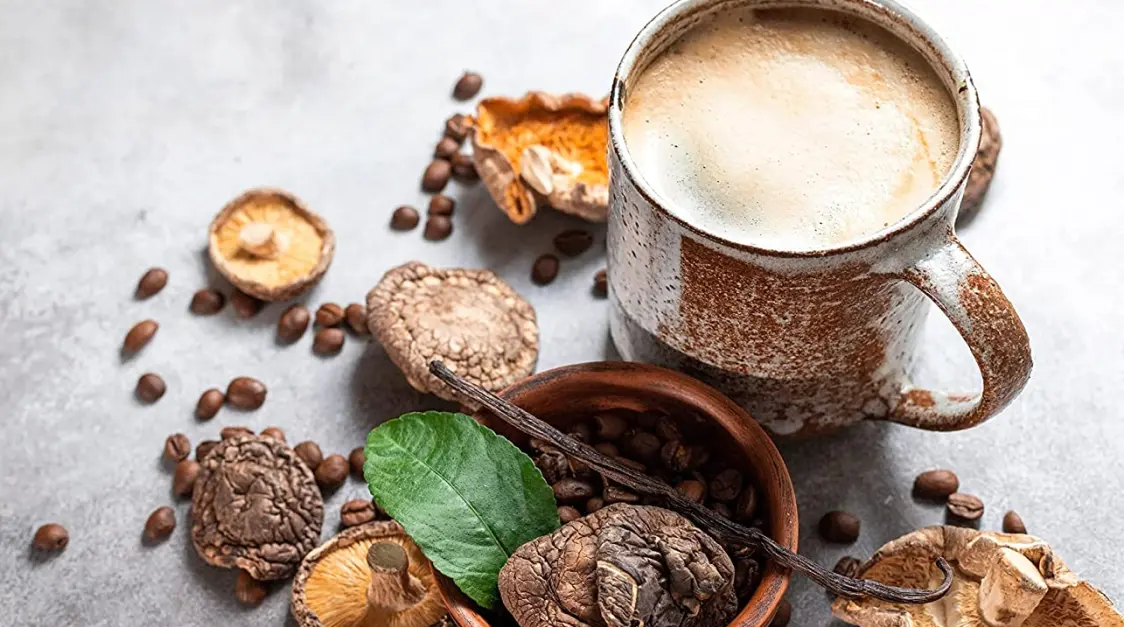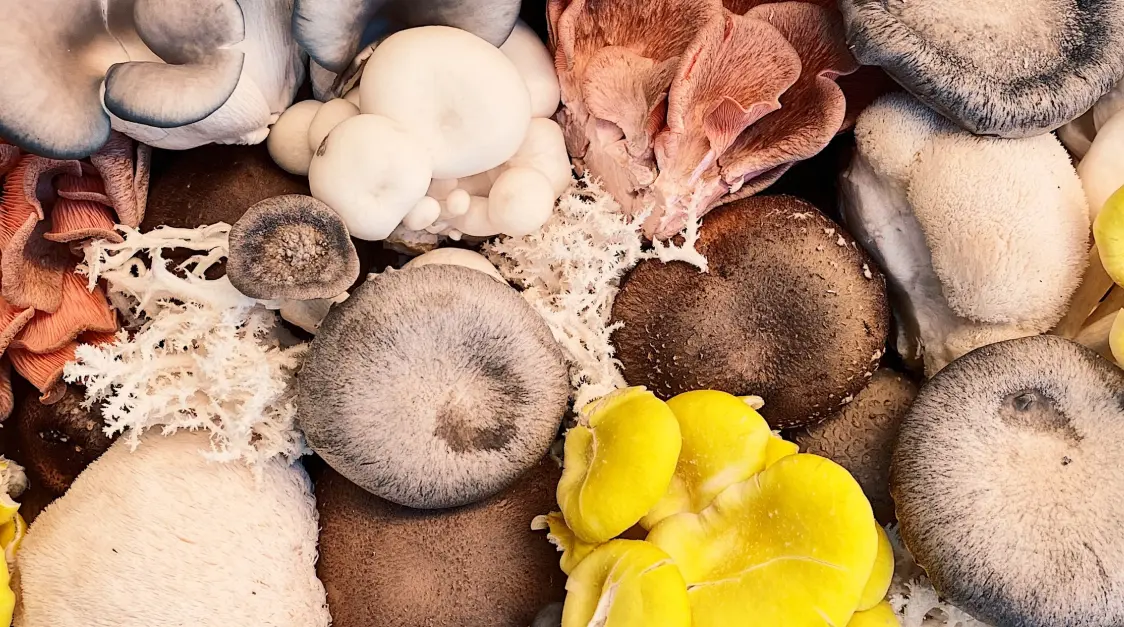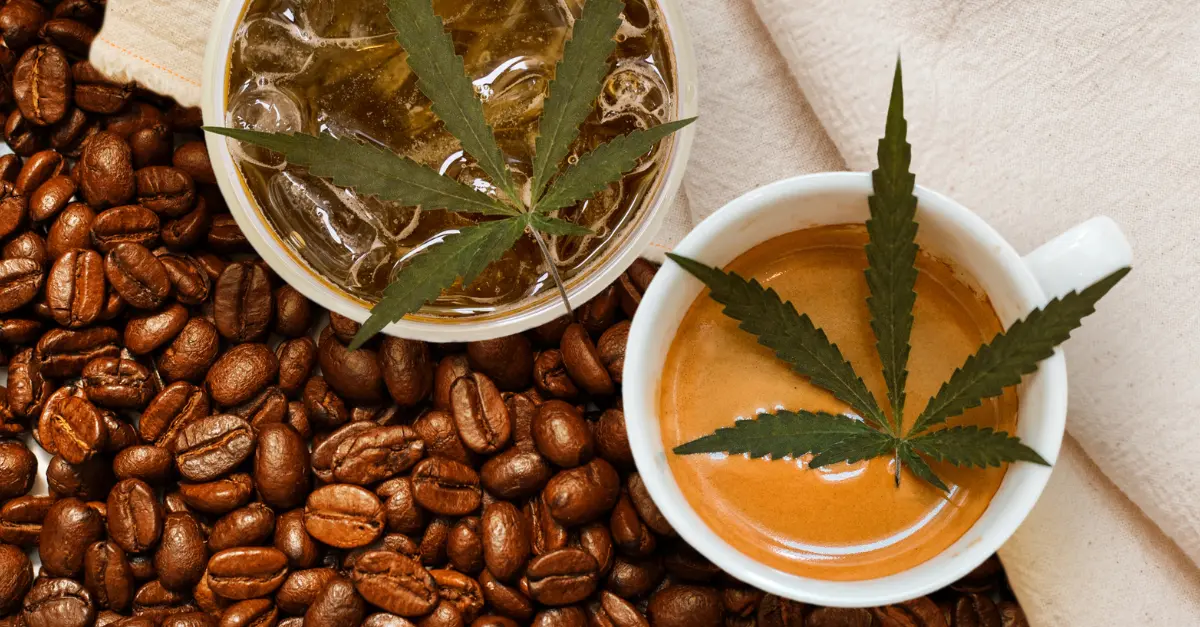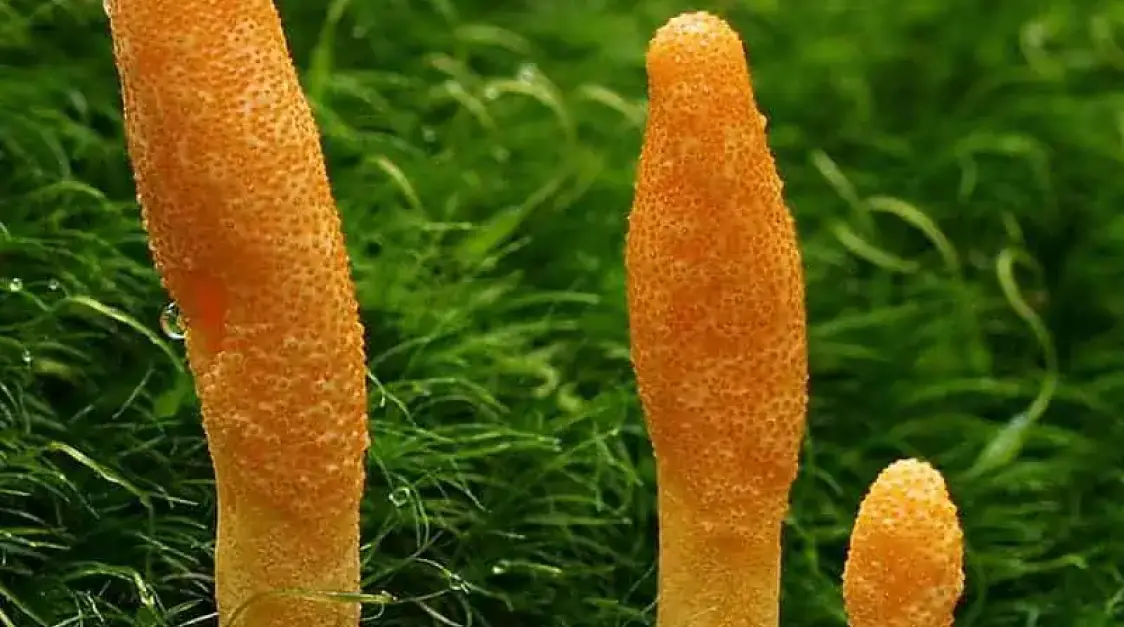Creating your mushroom coffee mix is the best way to control the quality and quantity of nutritional value and added health supplements. There are many mushroom coffee blends on the market at the moment which are promising a lot. Knowing how much of each mushroom is in the product is impossible as they do not share their formula. Therefore, learning to make your mushroom coffee blend is essential if you are serious about trying out medicinal mushrooms or if you want to keep using your local coffee brew. This article will discuss product quality, daily recommendations and the extraction process. I decided to introduce you to mushroom cultivation and the worldwide cultural fascination around mushrooms.
Learn more about mushroom coffee blends and the health benefits of some medicinal mushrooms here.

Mushroom Coffee: The Recipe
Mushroom coffee is a unique and popular beverage that combines the earthy flavors of mushrooms with the aromatic notes of coffee.
Ingredients:
- 1 cup of hot water
- 1 tablespoon of ground medium roast coffee or decaf espresso coffee
- 1 teaspoon of mushroom powder (Chaga, Reishi, Lion’s Mane, or a blend of your choice)
- 1/4 cup of milk or a dairy-free alternative
- Sweetener (optional), such as honey, maple syrup, or stevia or sugar-free syrups
Instructions:
- Boil the Water: Bring 1 cup of water to a boil. You can use a kettle or heat the water on the stove. Make sure the water is hot enough for brewing coffee.
- Prepare the Coffee: While the water is boiling, add 1 tablespoon of ground coffee to your coffee maker or French press. If you prefer a stronger or milder taste, adjust the amount of coffee accordingly.
- Add Mushroom Powder: Once the water has reached the boiling point, stir in 1 teaspoon of mushroom powder. You can use a single type of mushroom or a blend of different varieties, depending on your preference.
- Brew the Coffee: Pour the hot water over the coffee grounds and mushroom powder. Allow the coffee to steep for about 3-5 minutes, depending on your desired strength.
- Heat the Milk: While the coffee is brewing, heat 1/4 cup of milk or dairy-free alternative in a separate small saucepan or in the microwave until it’s warm.
- Froth the Milk (Optional): If you enjoy frothy coffee, you can use a milk frother or a blender to froth the warm milk until it becomes creamy and foamy.
- Combine and Sweeten: Once the coffee is ready, strain it into your favorite mug. If desired, add sweetener to taste. Start with a small amount and adjust according to your preference.
- Mix in the Milk: Pour the frothed milk into the coffee, stirring gently to combine the flavors.
- Enjoy: Your mushroom coffee is now ready to be savored! Sit back, relax, and enjoy the unique blend of mushroom goodness with the rich taste of coffee.
How to choose the right product for your mushroom coffee blend?
The main question to ask is : what is in the product?
Polysaccharides
Whether it is powder or liquid extract, the product should have an official label with bio-actives like beta-glucan and triterpenes. If you don’t see it on the label but only on the website, you’re probably being scammed. You can check whether your product’s reviews are fake on this website.
In order to make you believe that you are purchasing a premium quality product, vendors often make unsubstantiated claims on their websites. For example, they would use the term ”polysaccharides” - which only means a complex sugar - instead of beta-glucans. A beta-glucan is a polysaccharide, but not every polysaccharide is a beta-glucan. In all mushroom supplements, the main bioactive ingredients are beta-glucans, terpenes, polyphenols and phyto-sterols.
Percentage
If a product contains a higher percentage of beta-glucan (ex: 12%) with an overall lower volume (ex: 300mg) compare to another product with higher volume (ex: 500mg) and less concentration of beta-glucan (ex: 7%), the first product is more advantageous.
Heavy Metals
It should be noted that “organic” is never a guarantee of quality when it comes to mushrooms; it does not imply that the product is not contaminated with heavy metals. There are heavy metals everywhere, and mushrooms accumulate heavy metals from their environment. It is considered questionable if the product label does not contain any information and there is no third-party test report. It is also important to know where the mushrooms were harvested. Ask for a detailed test report. This report should include the lab’s contact details and accreditation, such as ISO-17025.
Tincture are to be avoided.
Extremely poor value for your money. There are also never any specifications on tincture bottles. You have no clue at all about what you get. Liquid extracts/tinctures are usually at least 20-30 times more expensive than powdered extracts of good quality. Keep an eye on those deceptive percentages, and don’t get sucked in by low prices. In the example below, you can see see that 35-45% is alcohol.
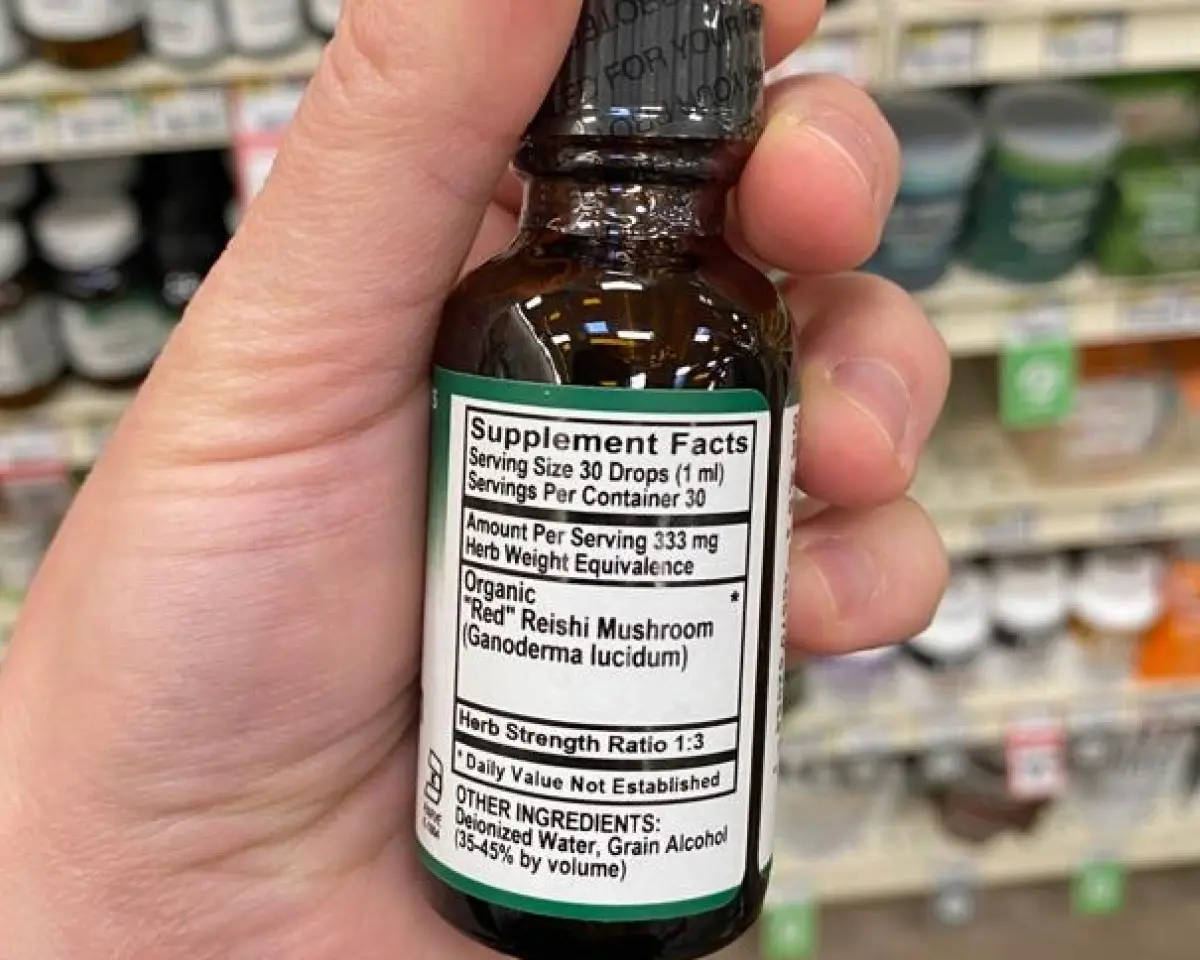
Almost half of this tincture is alcohol.
Conclusion
In most cases, vendors do not utilize any form of quality control. Always look for the specifications and check for third party test reports.
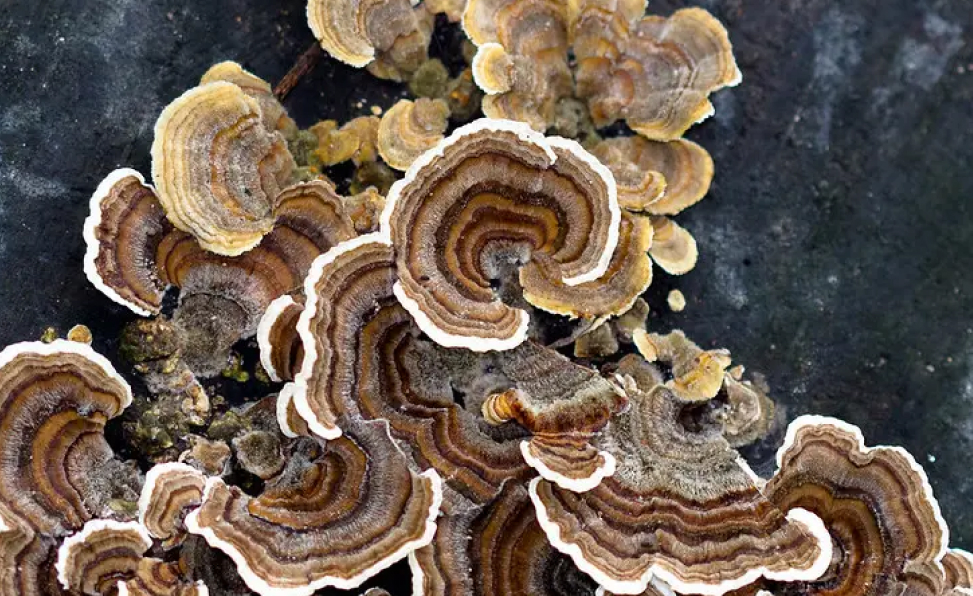
What are the daily recommendations for medicinal mushrooms?
The ideal daily dose of Chaga, Lion’s Mane, Shiitake, Turkey Tail, Reishi and Cordyceps is commonly around 2000 mg for powder, which is about one tablespoon.
The main quality markers are beta-glucans and polyphenols. There’s evidence that beta-glucans work best at a dose of 8 mg per kg of bodyweight for optimal immunological effects. For example, a powder with 20% Beta-glucan content provides 400 mg of immune-supporting polysaccharides.
Be aware that Chaga is a natural blood thinner, if you are already taking medication for high blood pressure, we recommend you talk to your doctor before trying chaga. Also - in raw Chaga, 90% is wood, 10% is mushroom, so most products have pretty low potency.
Learn more about the health benefits of each of the following 6 medicinal mushrooms here.
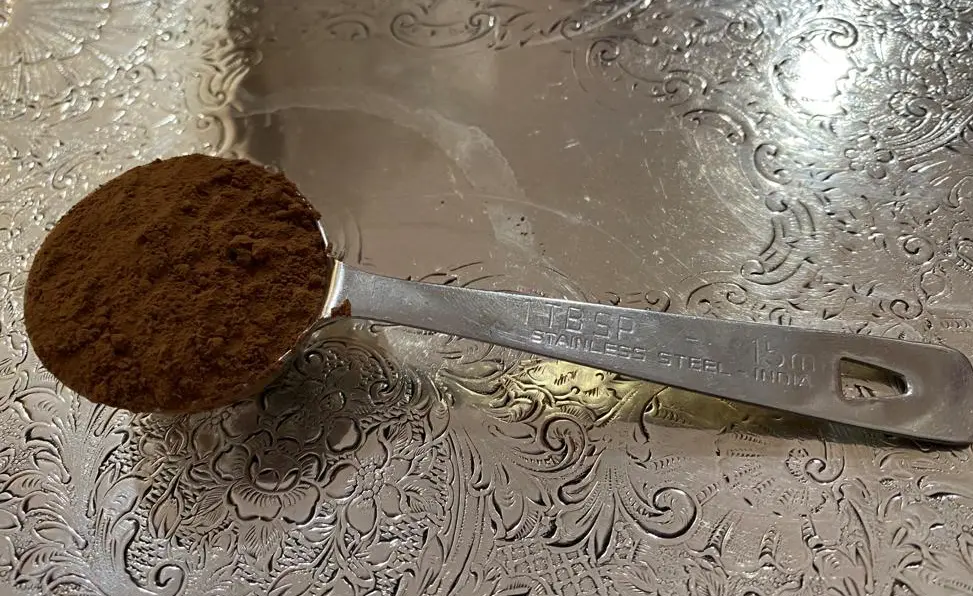
What is the extraction process?
Extracts are substances made by extracting a part of raw material (ex: vanilla beans), often with the help of ethanol or water as a solvent.
A mushroom extract consists of mushrooms as the raw material and water and ethanol as solvents. The solvents may be removed to leave behind a powder or a liquid that is bioavailable. This means that the mushroom’s health benefits (ex: beta-glucans) can easily be absorbed by our body.
Our bodies need mushroom extract to absorb the natural compounds. They are called beta-glucans which are polysaccharides - a complex carbohydrate whose molecules consist of a number of sugar molecules bonded together. Fungal cells are made of chitin, which is what makes a crustacean’s shell solid. The human body cannot digest chitin, so many mushrooms we eat end up as insoluble fibre. This is healthy for our gut, but it holds the compounds we want inside their chitin cell walls.
Despite the fact that extraction is more costly, it is essential to be able to guarantee therapeutic potency. Scams are easy to spot: their supplement facts label never breaks down the bioactive ingredients.
Click here to read more about how to get the best out of mushroom’s health benefits.
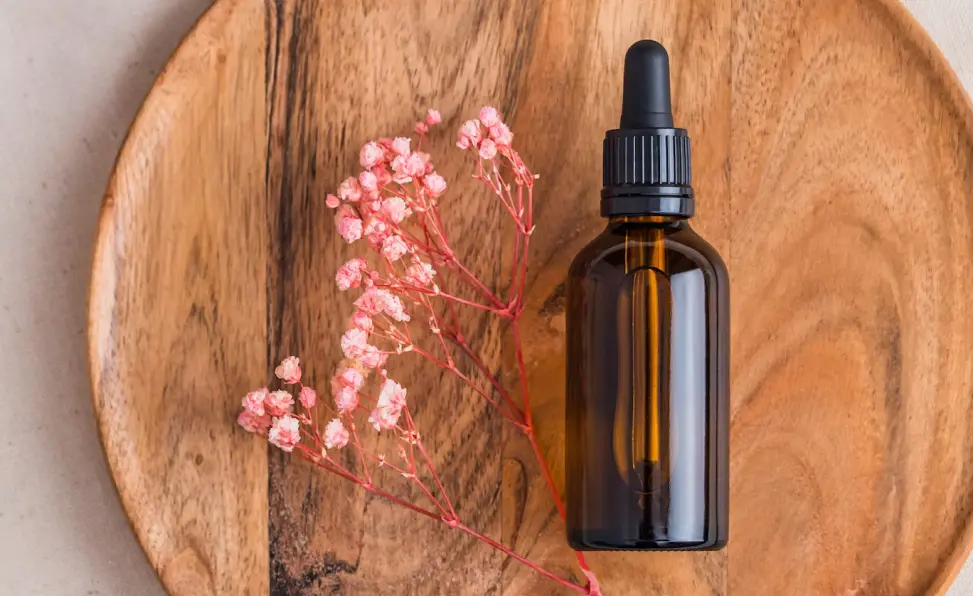
How to grow mushrooms?
Do you want to go even deeper into the wormhole? Grow your mushrooms! Growing mushrooms is not like growing plants. First, we need to understand the basic life cycle of a mushroom.
- Millions of tiny spores are released by mushrooms.
- When spores meet, they germinate and grow into thread-like structures called hyphae.
- Mycelium is formed when hyphae fuse.
- The mycelium will keep growing within the substrate they are growing into - the bark, compost or dead insects - until they run out of food or the tree falls on the ground. This signal the start of the next stage.
- The growth of mushrooms! The purpose of mushrooms is to release spores to grow on something else.
This short documentary shows how the Southwest Mushrooms Company grows their mushrooms. They sell fresh, dried and powdered mushrooms as well as growing kits.
Second, we need to be more specific. To grow mushrooms, you will need to understand the mushroom’s food source of preference. For example: Reishi likes to grow on decaying tree bark. Therefore sawdust will be a suitable substrate for it. Portobello mushrooms, which are fully grown crimini mushrooms, grow on composted material and are considered a secondary decomposer to other organisms that break down the matter first.
Less than 1% of coffee biomass makes it to the cup of coffee you drink in the morning. The coffee beans produced yearly are more than 9 billion kilos. Who can help us recycle this enormous amount of waste coffee? Oyster mushrooms! They love growing on coffee waste as it is still packed with nutrients.
And finally, we need to respect the conditions the mushroom likes to grow in and protect your substrate from potential contamination. Mist the mixture each day with water. Reduce watering to twice a week when mushrooms begin to appear after 18 to 21 days. During fruiting, keep the temperature between 15 and 18 degrees Celsius (59 and 64 degrees Fahrenheit).
Why the fascination for mushrooms?
Mushrooms are the fruits of hyphae, the underground body of fungi, and we have an estimated 3 million species of fungi.
The 21st century has seen an explosion in fungi interest from all disciplinary fields. In his best-seller, Entangle Life, the biologist Merlin Sheldrake explains that the more we understand fungi, the less possible it is to separate living beings into separate categories, as they cannot exist without their relationships with other specie. The border between the Self and the Other is so entangled that we cannot talk about an individual’s identity but its many connections with its ecosystem. Sheldrake reminds us that there are more bacteria, viruses and fungi within our guts than stars in the known universe. Our DNA is a minority in the ecosystem we call the Self.
They were the first to make life possible on Earth back when any lifeform was entirely within the oceans. In the documentary, The Kingdom: How Fungi Made Our World, these incredible alien-like creatures were the first to step on the Earth while all other forms of life were still in the oceans and therefore were the first Earthiens.
“Ultimately, fungi helped plants move away from being these marginal tiny little things on the water’s edge into large forests and entire ecosystems,” explains Katie Field, an associate professor in plant-soil interactions at the University of Leeds. From the beginning, they have been, and still are, agents of transformation, connection and evolution. As if this was not enough to help us appreciate them more, let me list a few more reasons why this kingdom is creating such excitement and hope:
- 20 species are known to degrade, eat and transform plastic that would otherwise take over 1000 years to decompose.
- Fungi could replace the use of wood and concrete. Mycelium bricks have been used in buildings.
- The world of fashion is now embracing mushroom fabric and getting inspired by the otherworldly shapes of mushrooms.
- Biomimicry within the design industry is helping us reunite with the natural world.
- Replacement for meat, styrofoam and leather
- Many scientific studies have shown that psilocybin could dramatically reduce and potentially cure PTSD, addiction, anxiety disorders and depression. The scientific community is working towards understanding these findings and decriminalizing the use of certain psychedelics for potential treatments.
If there are one subject scientists, artists and intellectuals all alike can agree on is that fungi do have a lot to teach us. Fungi is a return to wild hope. Trends tend to pass quickly, but this new adoration of fungi will become a pillar to a healthier future. Fungi offer us a lens into what tomorrow could look like if we apply its message of solidarity and respect towards the delicate balance of life.
